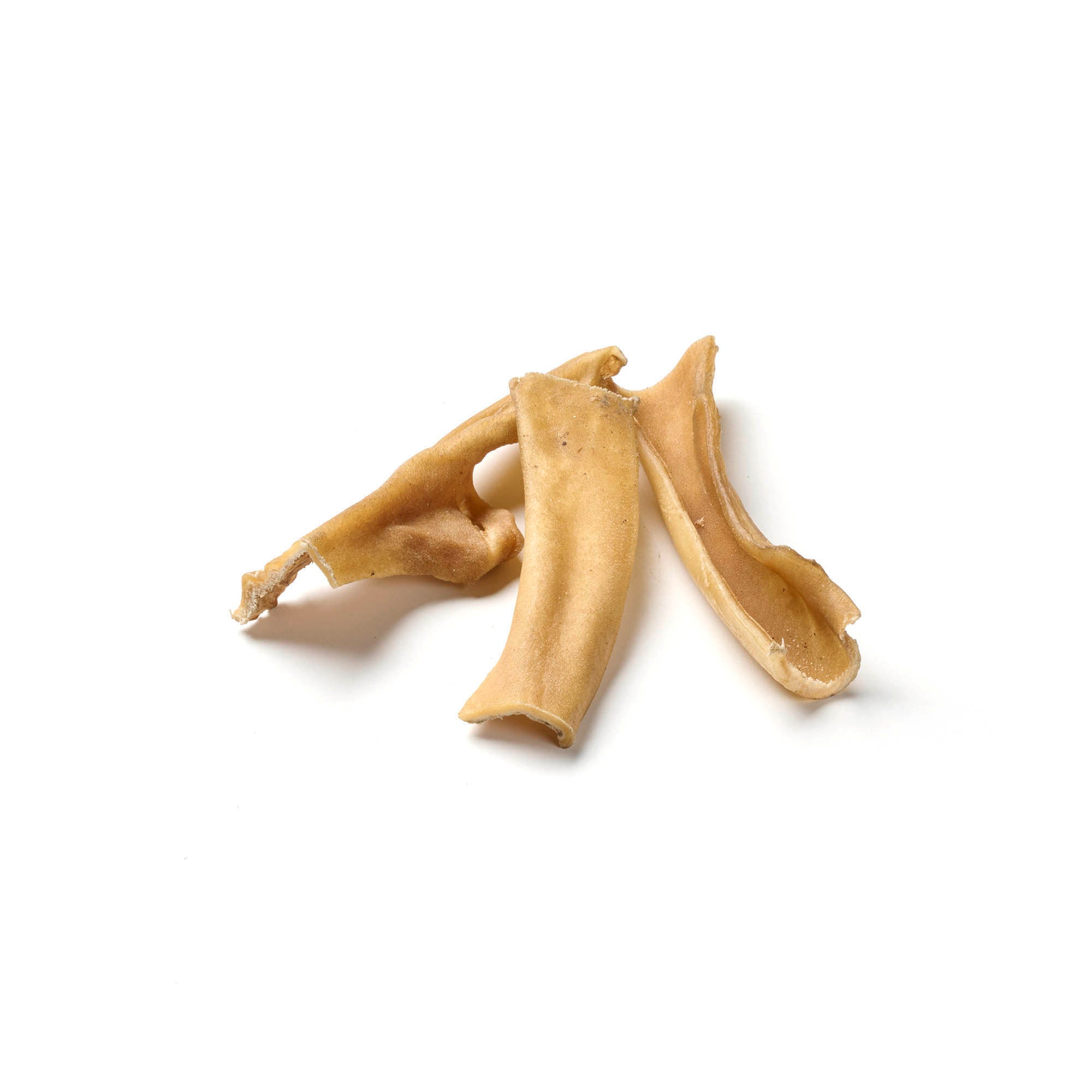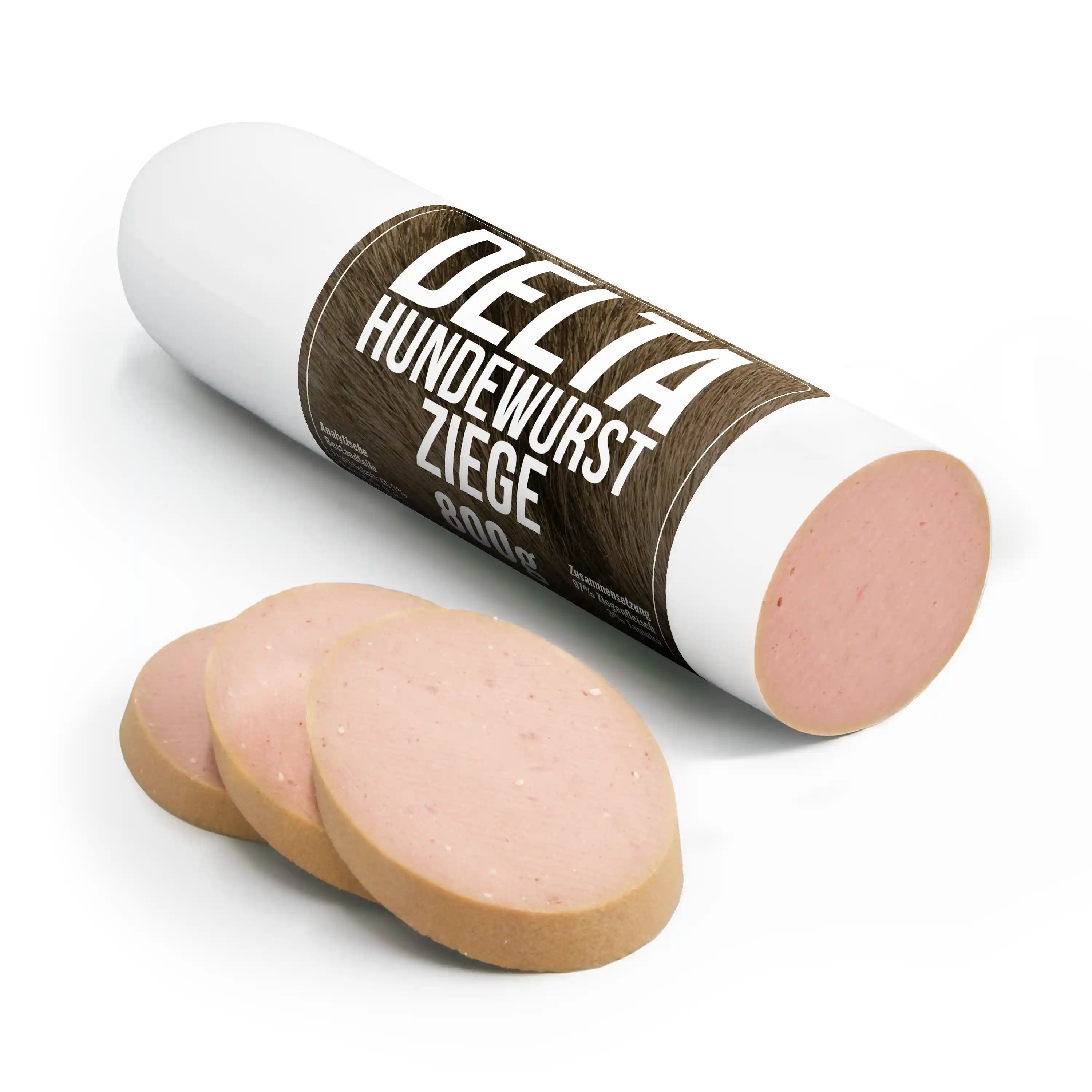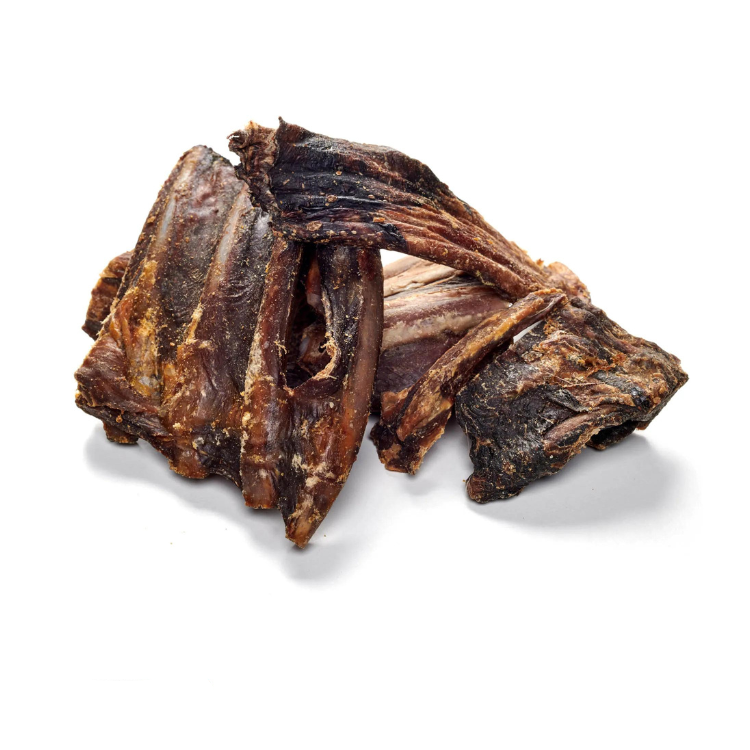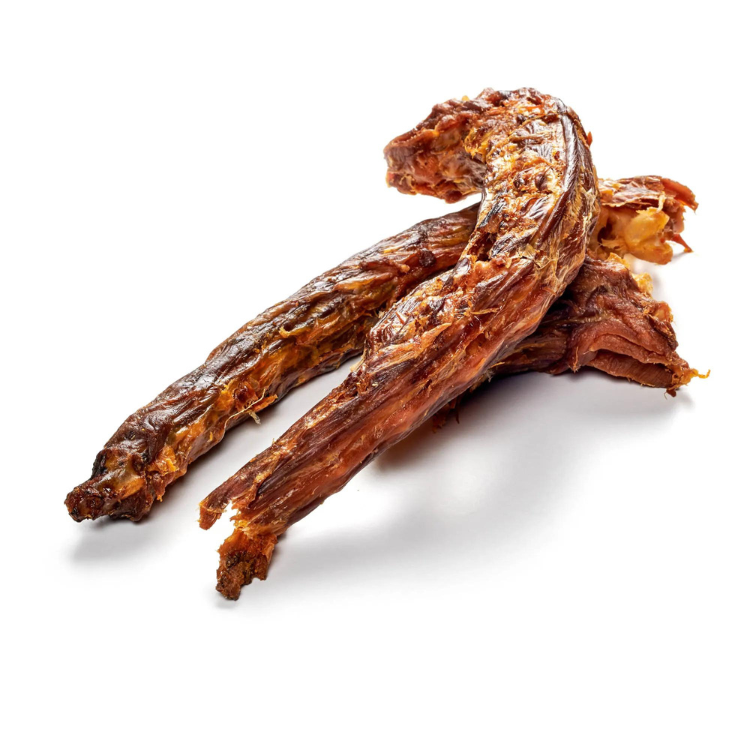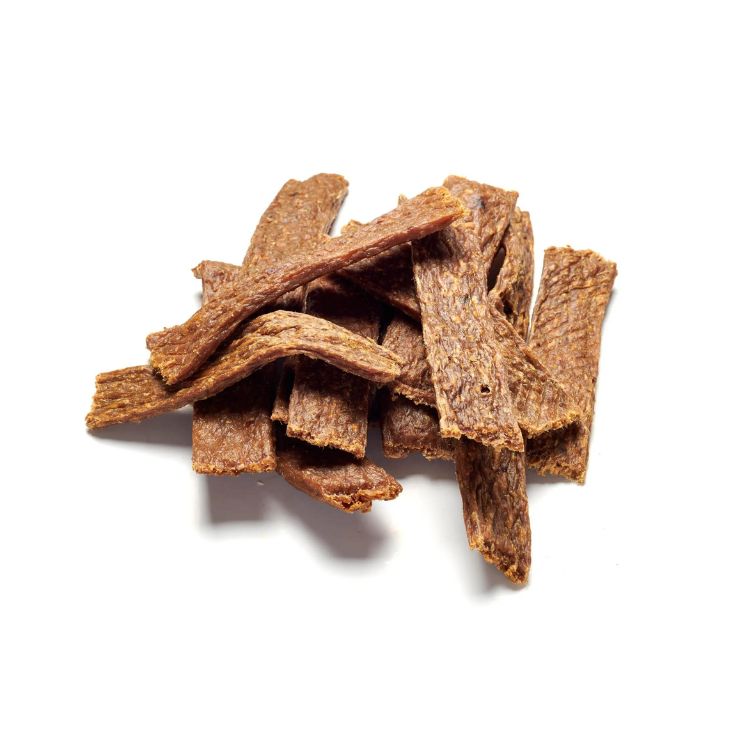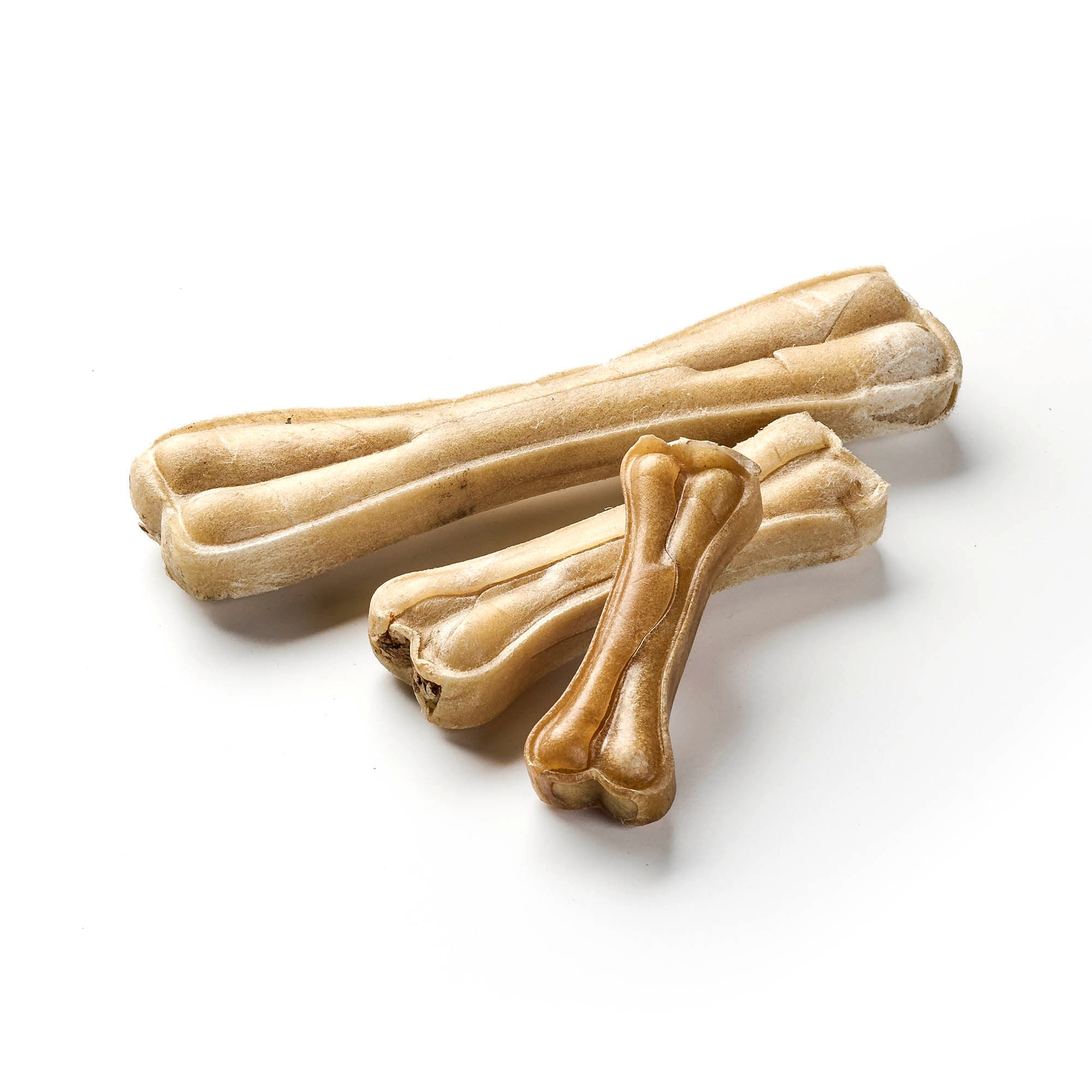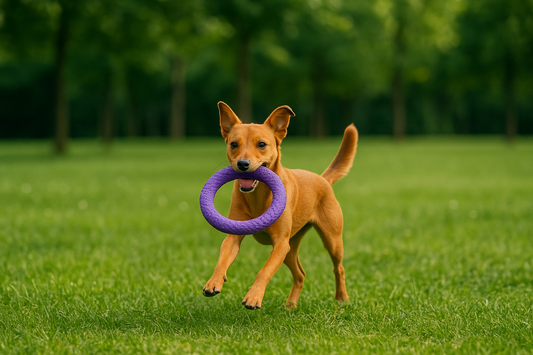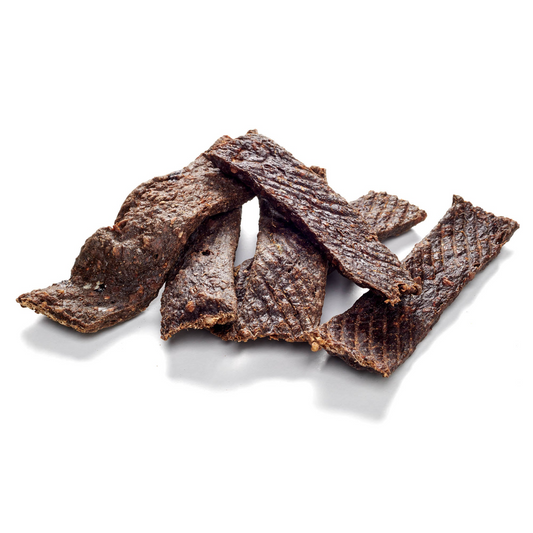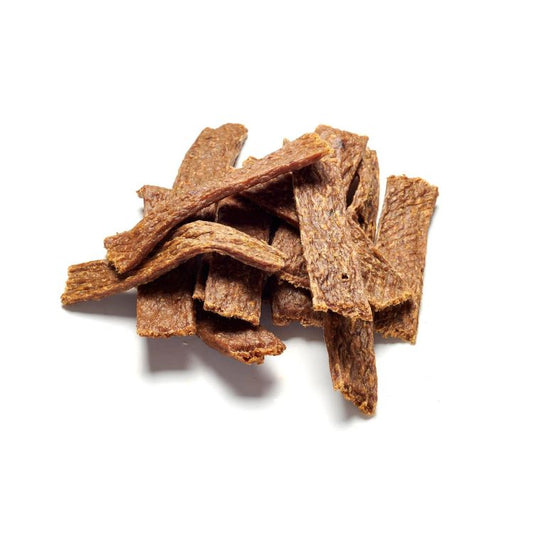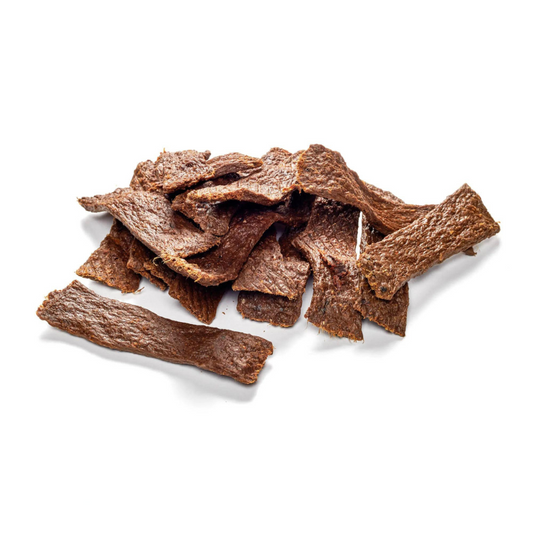
The dangers of cold and road salt for dog paws
Share
> In winter, dog paws are exposed to particular challenges. Icy temperatures, snow and the omnipresent road salt take a real toll on the sensitive pads. But a dog's pads are not just there to cope with the daily walk - they also fulfil important functions for the animal's stability and mobility. If the paws are not protected and cared for, cracks, irritation and, in the worst case, even injuries can occur. To prevent this, it is worth ensuring protection and the right care in good time. This way, the winter fun remains undisturbed and the paws stay healthy too.
Content: The dangers of cold and road salt for dog paws
- Dangers for Dog Paws in Winter
- Preparing Dog Paws for Winter
- Protective measures during winter walks
- Paw care after a walk
- First aid for sensitive or injured paws
- Long-term measures for healthy dog paws
- Conclusion: Care and protection as the key to healthy dog paws
Dangers for Dog Paws in Winter
In winter, dog paws are exposed to numerous dangers that can affect the health of the pads. Cold and frost dry out the skin and lead to cracks and inflammation. Road salt and chemicals also irritate the skin and can even cause health problems if the dog licks the paws. Frozen snow and ice pose a risk of injury due to sharp edges that can leave cuts and wounds. Clumps of snow between the toes are also uncomfortable and put strain on the skin. These dangers show how important comprehensive protection of dog paws is to avoid long-term damage and maintain health.
Treat your dog to something special with our chew products!
Cold and frost: effects on the bales
The freezing temperatures in winter can take a toll on the pads. Although the skin on the paws is tougher than on other parts of the body, it is not invulnerable. Cold dries out the skin, which can lead to cracks and painful areas. These cracks are not only uncomfortable, but can also become infected if dirt and germs get in.
Icy surfaces, which act like small sandpaper, are particularly dangerous. Another problem is ice between the toes. If it stays there for a long time, it presses uncomfortably and can also irritate the skin. Regular checks and avoiding long periods on very cold ground can help prevent damage.
Road salt and chemicals: irritations and risks
Road salt is a real winter enemy for dog paws. The chemical substances in the salt act like an irritant on the sensitive skin. Even the smallest cracks in the pads are literally "awakened" by the salt, which burns and hurts. If the dog then licks the paws, these substances also get into the stomach, which can cause stomach irritation or even poisoning.
Residues from other winter chemicals, such as antifreeze, also pose a risk. It helps to clean the paws thoroughly after each walk and carefully remove any residue. Paw protection products can also form a protective layer against the chemical irritants.
Snow and ice: risk of injury from sharp edges
Frozen snow and ice often act like small knives. When running, they can form sharp edges that cause cuts and tears in the pads. This is especially dangerous when the dog runs or plays in snowy terrain where chunks of ice are hidden under the snow.
Such injuries can go unnoticed until the dog suddenly starts limping at home. Clumps of snow that accumulate between the toes also exert pressure and can irritate the skin. The risk can be minimized with simple tricks such as trimming the fur between the toes and using paw balm.
Preparing Dog Paws for Winter
Good preparation of the paws is essential to prevent winter stress. Even before the cold season, walks on different surfaces can help to harden the pads and make them more resilient. Skin care can be supported by the right diet.
Essential fatty acids and high-quality nutrients from chews such as beef scalp or salmon skin strips promote the health of the skin on the pads. Getting used to protective products such as paw balm or dog shoes should also begin early so that they can be used without any problems in winter. Well thought-out preparation minimizes the risk of tears and injuries.
Training the hardness of the ball of the foot through walks on different surfaces
Good preparation of the dog's paws begins before winter. Walks on different surfaces such as gravel, sand or forest floor promote the natural hardness of the pads. This hardening ensures that the paws become more resistant to the challenges of winter. An additional advantage: the dog gets used to moving safely on different surfaces.
This training not only strengthens the skin on the pads, but also the muscles and tendons of the paws. Just a few minutes a day on harder surfaces can help to improve the resistance of the pads and prepare them for the rigors of winter.
Promoting Skin Health Through Nutrition
A balanced diet is an important factor for healthy paws. Essential fatty acids, vitamins and minerals help to keep the skin supple and resilient. Omega-3 fatty acids from salmon or fish oil can help prevent dry skin.
High-quality chews such as beef scalp , or dried deer tripe are not only tasty, but also provide valuable nutrients that strengthen the pads from the inside. These chews also provide entertainment and promote dental health - an all-round package for the care and health of the dog.
Protective measures during winter walks
During winter walks, dog paws need special protection. Regular checks before and after the walk help to identify small problems early. Using paw balm provides a protective layer against cold and road salt. For extreme conditions, dog shoes or booties are a good option as they shield the paws from external influences.
The right diet also plays a role: nutrient-rich chews such as dried salmon skin can strengthen the pads from the inside. With these measures, dog paws can be well protected, so that winter walks remain a pleasure even in icy temperatures.
Paw cleaning and inspection before and after the walk
Before and after a walk, it is a good idea to check the paws thoroughly. Look for foreign objects, small injuries and clumps of snow between the toes. After the walk, it is advisable to clean the paws with lukewarm water to remove road salt and dirt residue.
A mild dog soap or a special paw cleaner can help with this. The paws should then be dried thoroughly, as moisture can further irritate the skin. This small care routine not only protects against irritation, but also helps to identify potential problems early on.
Use of paw balm and other protective products
Paw balm is an easy way to protect the pads from cold and road salt. These products form a protective layer that retains moisture and prevents irritation. Applied before a walk, the balm ensures that the paws remain well cared for while the dog is out and about. After a walk, a moisturizing balm can soothe the skin and treat small cracks. Natural ingredients such as beeswax, aloe vera or coconut oil are particularly gentle and nourishing.
Paw protection through dog shoes or booties
Dog shoes, also called booties, are a practical way to protect sensitive paws from winter hazards. These small shoes are made of robust, water-repellent material and offer protection from cold, snow and road salt. They are a useful addition, especially for dogs with sensitive skin or existing injuries.
When buying, make sure that the shoes fit well and offer the dog sufficient support. You should also think about getting used to the booties - if the dog wears them for a short time at home, they can slowly accept the shoes. Booties not only protect against external influences, they also prevent snow and ice from getting stuck between the toes.
Nutrition as a preventive measure for healthy paws
The health of the paws starts from the inside. A balanced diet strengthens the skin and makes the pads more resistant to cold and cracks. Omega-3 and Omega-6 fatty acids play a central role in this, as they support the moisture balance of the skin.
Chews such as dried salmon skin or tripe provide these important nutrients and are a tasty addition to the food. In addition, high-quality snacks with natural ingredients can help promote general skin health. The combination of proper nutrition and external care forms a solid foundation for resilient and healthy dog paws in winter.
High-quality dog chews for your faithful companion can be found here!
Paw care after a walk
Proper paw care after a winter walk is crucial to prevent damage. After contact with road salt or snow, the paws should be cleaned thoroughly. Lukewarm water gently removes residue, while a soft towel ensures thorough drying.
For aftercare, moisturizing products such as paw balm can be used to soothe the skin and retain moisture. Even minor injuries should be identified and treated immediately to avoid inflammation. With a consistent care routine, the paws will remain healthy and resilient even in the cold season.
Thorough cleaning of paws after contact with road salt
After a winter walk, it is essential to clean the paws thoroughly. Road salt and other residues can stick to the pads and irritate the skin. A simple method is to rinse the paws with lukewarm water. For stubborn dirt, mild dog shampoos or special paw cleaners that also have nourishing properties are suitable.
A soft towel should be used to dry the paws thoroughly afterwards. Moisture between the toes can encourage the development of fungi and infections, so care when drying is particularly important.
detection and treatment of injuries
After a winter walk, it is worth checking the paws for injuries. Cracks, cuts or redness can indicate external irritation or stress. Smaller wounds can be treated with an antiseptic spray or natural remedies such as coconut oil.
If the dog licks its paws more frequently or if swelling is visible, this may be an indication of an infection. In such cases, it is advisable to consult a veterinarian. With careful monitoring and timely treatment, major problems can often be avoided.
First aid for sensitive or injured paws
Despite all precautions, injuries or irritations to the paws can occur. In such cases, rapid first aid is important. Small tears or cuts can be cleaned with mild disinfectants and treated with special dog ointments. A light bandage protects the wound from further irritation. If symptoms are more severe, such as swelling or persistent pain, a veterinarian should be consulted to rule out infection.
Chews can be a helpful distraction during treatment and reduce the dog's stress. With the right supplies, many problems can be solved quickly and easily.
Quick treatment of minor injuries or irritations
Small injuries to the paws can be treated quickly to avoid major problems. A mild disinfectant will help keep the wound clean and prevent infection. Natural products such as aloe vera or special dog ointments can be used to promote healing. In addition, a light bandage can be applied to protect the injured area from further irritation. It is important to check the wound regularly to ensure that it is healing well. Small injuries that are treated immediately usually heal quickly and without complications.
Indicators for a necessary veterinary visit
Sometimes simple treatment at home is not enough and a visit to the veterinarian becomes necessary. If the paw is swollen, the dog is in pain or the wound is getting worse, professional help should be sought. Vigorous licking of the affected area can also indicate deeper problems. The veterinarian can examine the injury thoroughly and apply special medication or bandages if necessary. A quick response to serious symptoms will protect the dog from long-term damage.
Chewing items as a relaxation option during grooming
Chewing items can be a helpful distraction when grooming paws or treating injuries. They keep the dog busy and reduce stress while the paws are being cared for. Products such as beef ears or chew sticks are ideal because they not only keep the dog's attention but are also good for the teeth. This simple method makes grooming more pleasant and at the same time promotes the animal's well-being.
Long-term measures for healthy dog paws
In addition to acute care, long-term measures are crucial to ensure the health of dog paws. Regularly trimming the claws prevents unnecessary pressure on the pads. Trimming the fur between the toes minimizes the risk of snow clumps forming. A high-quality diet with natural chews promotes skin health and makes the pads more resilient. Walks on different surfaces also strengthen the paws in the long term. With a holistic approach, the paws can be optimally protected and prepared for the challenges of winter. These measures help to ensure that the pads remain robust and healthy.
Regular claw care and removal of fur accumulations
Claws that are too long can affect the dog's natural posture and put additional pressure on the pads. This can not only put strain on the paws, but also lead to pain and posture problems. Regular claw trimming is therefore an important measure for healthy paws. In addition, fur often accumulates between the toes, which can retain moisture and dirt in winter. This fur should be carefully trimmed to prevent snow clumps and the penetration of foreign objects. Regular paw care minimizes the risk of irritation and injury and ensures more comfort when walking.
Adapting walks to extreme weather conditions
In extremely cold or gritty weather, walks should be adapted to reduce the strain on the paws. Shorter walks in sub-zero temperatures or on heavily gritted paths can help prevent damage to the pads. On particularly icy days, indoor alternatives offer a good way to keep the dog busy. Chewing items such as dried beef ears or lamb tripe are a perfect activity that also helps with dental care. With a little creativity, you can also create exciting activities in the house that challenge the dog mentally and physically.
Conclusion: Care and protection as the key to healthy dog paws
Proper care of dog paws in winter is essential to prevent cracks, irritation and injuries. Cold, road salt and sharp ice surfaces pose major challenges that can be countered with targeted measures. From preparing the paws to protective products and the right diet - a holistic approach ensures healthy and resilient pads. Chews play a dual role: They not only promote skin health from the inside, but also offer an ideal way to keep the dog busy on cold days. With these measures, winter remains a time of joy for both dog and owner, without the health of the paws suffering.
Bring joy to your dog's day with our treats!

